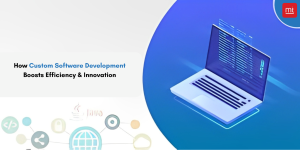4 Critical Capabilities of the Gartner Magic Quadrant

Technology has changed so drastically that the landscape of the economy and business operations today would seem like witchcraft to entrepreneurs who were considered luminaries a century ago. Paper is all but a thing of the past, many businesses are entirely virtual, and companies are now creating ads and promotions to target individuals as well as the masses.
One of the main reasons that businesses are able to connect with consumers is data analytics. The information encrypted in metric data has helped many companies go from small to large because they were able to recognize obscure trends that their fiercest competitors couldn’t, and capitalized on them. Master data management (MDM) helps to turn metrics into actionable information as well as make it more readily accessible. According to Gartner’s MDM Magic Quadrant report, the following capabilities are among the most critical for MDM software.
1. Multi-Domain Master Data Management
One thing for sure is that it takes more than one software program to build an infrastructure robust enough to meet all of your operational and information needs. Just as sure as you need a program to manage your customer relationships, you also need programs to manage inventory and to monitor the market you’re in.
Just because you have multiple programs that serve different functions, that doesn’t mean that they’re mutually exclusive. There inevitably are points where the functions and information of your different enterprise software programs intersect and can indeed benefit one another. The problem that many businesses have is that they don’t know how to integrate their different programs and get them to operate harmoniously.
One of the main things that businesses expect from vendors of MDM software is that these programs ease the process of disseminating data analytics across multiple domains. Pulling information from varying reference points and sources and analyzing it for trends and metrics is much easier when you have an infrastructure that facilitates the ease of data integration.
2. Master Data Management of Buy-Side Product Data
Buy-side product data deals with procurement, in other words, the supply end of supply and demand. According to Gartner, one of the critical solutions that enterprises want from MDM vendors is better management and more in-depth metrics about the buy-side of products.
With the proper data analytics infrastructure, you can use metrics to pinpoint suppliers who are the most cost friendly and consistently meet key performance indicators. The more dependable your suppliers are, the more dependable you can be for your customers—and the cheaper your suppliers are, the better prices you can offer your customers. There’s always room to improve your business model, and sometimes that way is your procurement strategy. Don’t overlook how MDM software can help you to fine-tune your buy-side product strategy.
3. MDM of Sell-Side Product Data
It’s understandable if, like most entrepreneurs, you place more interest in the sell-side of product data than on the buy-side. Truth be told, that’s probably the area of business intelligence with the most potential to find the metric that turns out to be the secret sauce for your business. The thing about sell-side data, or any data for that matter, is that you want to be able to access it on any relevant program and not just the MDM software itself. That’s true MDM data integration, and it’s what you can expect from a vendor whose software ranks in the Gartner Magic Quadrant MDM solutions report.
4. MDM of Customer Data
We’ve saved the best, or most critical, capability of MDM software for last. There are varying opinions about whether or not the customer is always right, but there’s general consensus that the customer should be number one. With MDM software, you can find patterns in your customer relations that your customer relationship management (CRM) would otherwise miss, helping you to find new customers as well as generate loyalty in current customers.






